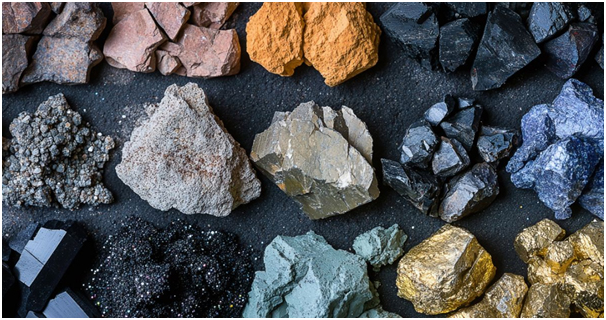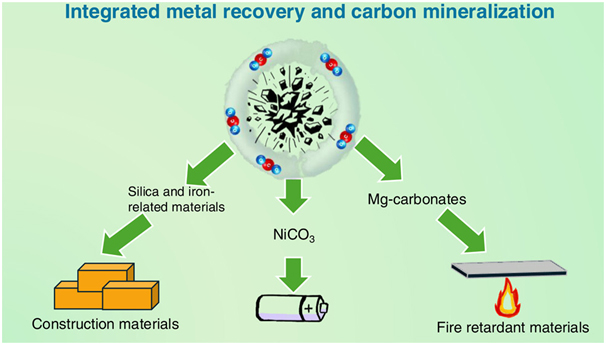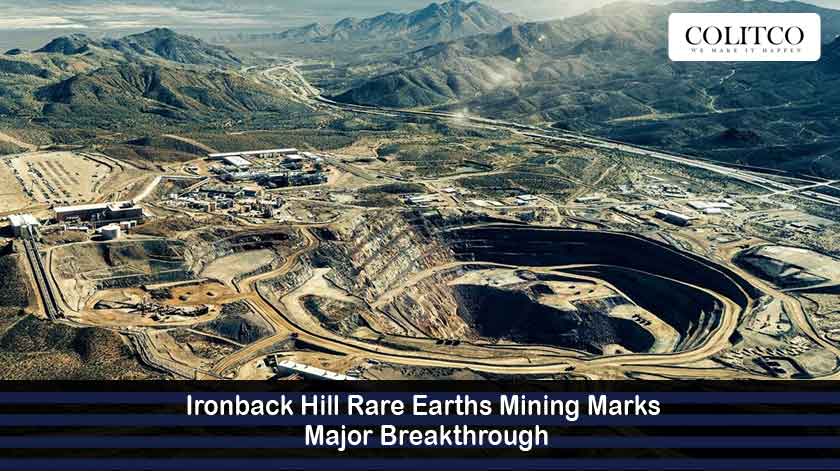Magnetite Mines has made sure of rare earth element mineralisation at its Ironback Hill project in South Australia. The finding is the result of resampling old drill samples that were first taken during iron ore exploration in 2011–2012. The results indicate mineralisation between 356 ppm and 1,153 ppm total rare earth oxides (TREO), based on a 350 ppm cut-off.

Magnetite Mines confirms rare earths at Ironback Hill with strong grades.
Why Is This Rare Earth Discovery Significant?
This is the first time rare earths have been reported at Ironback Hill. One of the things that was found is that there were neodymium oxide (Nd₂O₃) concentrations that were quite large, with the highest being 215 ppm over an 8-meter stretch between 12 m and 20 m.
Nd₂O₃ is a rare earth element with a high market value, used in making permanent magnets that are essential for electric cars, wind turbines, and military applications. The occurrence of such high-grade minerals could make the strategic value of Ironback Hill more important in the critical minerals market.
How Is The Mineralisation Hosted Geologically?
The mineralisation is found in shallow, clay-rich areas that often coincide with local drainage lines. This points toward a clay-hosted rare earth deposit, which may be easier to mine and process because of less complex procedures compared to hard-rock deposits.
However, the company has not yet conducted any metallurgical tests and thus does not know how much of the mineral can be recovered from this material.

Mineralisation sits in shallow clays, but recovery potential remains uncertain.
What Are Magnetite Mines’ Next Steps For Ironback Hill Rare Earths Mining?
The company anticipates performing cost-effective follow-up work to get a better picture of the economic potential. Among the activities proposed are not only leachability testing but also carrying out a comprehensive metallurgical evaluation, taking more samples, and constructing geological models. These steps aim to study the continuity and size of the mineralisation before any substantial investment is made in large-scale drilling or development.
What Does This Mean For Australia’s Rare Earth Minerals Ambitions?
The announcement of the Ironback Hill rare earths mining discovery coincides with a rising global need for critical minerals. The transition to a greener energy source and the increasing demand for defence applications are the main reasons why neodymium and other rare earths are highly considered.
This discovery not only reinforces Australia’s dominance in the rare earth market but also complements the country’s critical mineral projects portfolio, which is continually growing. A clay-hosted deposit, if proven economically viable, could bear a more scalable and less impacting way for production.

Australia’s rare earth discovery boosts critical mineral supply amid rising global demand.
What Challenges Does This Discovery Face?
Though there are some positive early indicators, there are still huge risks involved. The absence of metallurgical data is the reason for not knowing the status of technical and economic viability yet.
Leaching techniques may vary for different deposits, and it is possible that clay-hosted rare earths will not come with specific leaching methods that are cost-effective or technically less demanding. Subsequently, environmental and regulatory issues will have to be resolved as exploratory activities progress further.
The question stands: could Ironback Hill be a dual-resource opportunity?
The preliminary reports suggest that Ironback Hill is a potential site for both iron and rare earth elements. If the economic studies come out positive, then the combination could be a basis for the future operational flexibility and changing the revenue streams.
Investors will keep a close eye on the upcoming test-work and modelling, as these results will determine if the rare earths can be developed into a long-term value driver along with the project’s existing iron ore prospect stake.
In What Way Could this Discovery Help Supply Chains Globally?
Australia gets the discovery well since increased geopolitical tension around the rare earths supply chains is one of the main factors. Countries are looking for secure and clear suppliers for their advanced manufacturing, defence and clean-energy needs.
If follow-up studies yield good results, Ironback Hill could support the claim of Australia being a stable and, therefore, the world’s major source of the critical minerals needed for electric vehicles, turbines, and high-tech applications.
Also Read: Lynas Rare Earths Expands Heavy Rare Earth Separation Capacity in Malaysia
FAQs
Q1: What is TREO?
TREO, which stands for Total Rare Earth Oxide, signifies the joint concentration of rare earth elements, which is expressed in their oxide form.
Q2: Why is Neodymium oxide (Nd₂O₃) so critical?
The reason for Neodymium oxide being termed critical is the fact that it goes into the making of very strong permanent magnets, the use of which is prevalent in electric vehicles, wind turbines and defence systems.
Q3: By what means were the rare earths at Ironback Hill detected?
The since-rarefied samples were brought to light through a procedure of re-assaying reverse-circulation drill samples that the company had collected in 2011-2012.
Q4: When will Ironback Hill be ready for production?
The timeline for production is uncertain as the first and foremost step is for the company to finish exploration, metallurgical testing and modelling to evaluate the technical and economic feasibility of extraction.












